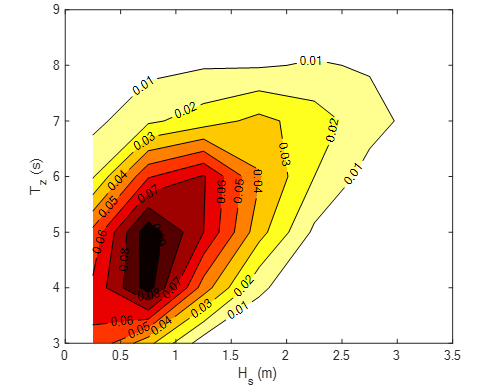Site-Specific Sea Wave Modeling
Published:
Estimation of sea wave height and frequency content are important in design of offshore structures. The sea waves are inherently very unpredictable and may not be modeled deterministically. To capture the uncertainty in amplitude and frequency of the waves, they are expressed in terms of a joint probability density function of mean zero crossing period Tz and the significant wave height Hs. Estimation of parameters of the joint distribution can be very challenging, particularly since the available historical data is usually in a histogram format; for an observation, you do not know the exact value but a range for it. The joint probability density function (PDF) of Tz and Hs is represented as the multiplication of a conditional distribution for Tz given Hs and the marginal distribution of Hs, that is
\({f_{T_z,H_s}\left(t_z,h_s\right)=f}_{T_z|H_s}\left(t_z|h_s\right)\ f_{H_s}\left(h_s\right).\)
To address this problem, Lognormal distribution and 3-parameter Weibull distribution are chosen for the conditional and marginal distribution, respectively. Furthermore, all the formulation for parameter estimation based on grouped input data are derived. This was the focus of my master’s thesis, and we published multiple research papers on this topic.

Please refer to the publication tab for more details. The study was supported by the National Science Foundation (NSF) under Grant No. CMMI-1403844.
